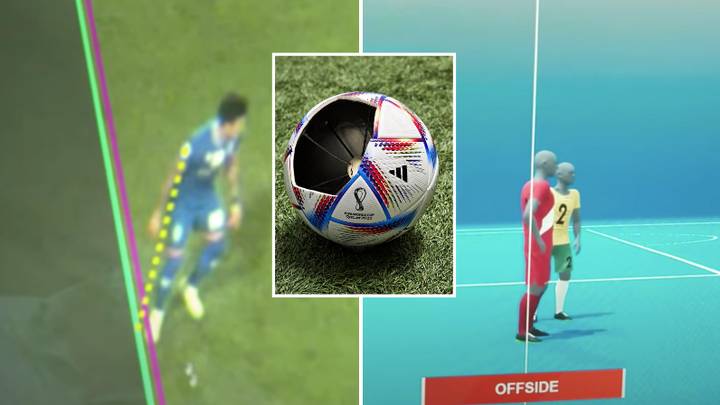Since its inception, football has been plagued by human errors that have affected results. And perhaps none have been more prominent than the dreaded ‘offside’. For years, it had been the job of the fourth official who had to decide with his own eyes in real-time to ascertain whether a player was offside or not.
And it led to several controversial decisions like Karim Benzema’s disallowed goal in the Champions League final. This first led to the Video-Assistant Referee (VAR) introduction to help the on-field referee make critical decisions. And now, the football world is about to get one step further by implementing Semi-Automated offside technology.
The technology aims to quicken the time to give offside decisions. The goal is simple, ensure offsides cause as little disruption to a game as possible. Already tested for three years, the technology was used in the 2021 FIFA Arab Cup and 2021 FIFA Club World Cup. FIFA had already announced its use in the upcoming World Cup in Qatar. And UEFA has followed. The association has announced that the technology will be used in the 2022-23 Champions League group stages. Before this, it will be used in the UEFA Super Cup final between Real Madrid and Eintracht Frankfurt.
So, what is the Semi-Automated offside technology?
What is Semi-Automated offside technology
Before diving into the technology, let’s look at its predecessor, the VAR. When it comes to offside, the VAR’s role is to check for offside during critical events such as goals. Unfortunately, while the technology is fast, it has a weak spot. The job of VAR only begins a little after the event has occurred.
The referees in the technical area then began to draw lines to check for offsides and announce their decisions. Usually, it can take more than 60 seconds. So, while it gives accurate results, it still takes time.
And this is where Semi-Automated offside technology comes into play.
⚽ Michael Oliver will take charge of next week’s #SuperCup match between Real Madrid and Eintracht Frankfurt in Helsinki.
The game will see a UEFA debut for Semi-Automated Offside Technology (SAOT), which will also be used as of the group stage in the upcoming #UCL season.
— UEFA (@UEFA) August 3, 2022
In this technology, 12 cameras will be placed on the roof of the stadium. The camera’s job is to track the play. These cameras will follow the ball and maintain 29 data points on all the players. These data points will be refreshed 50 times per second…
Click Here to Read the Full Original Article at FootTheBall…

